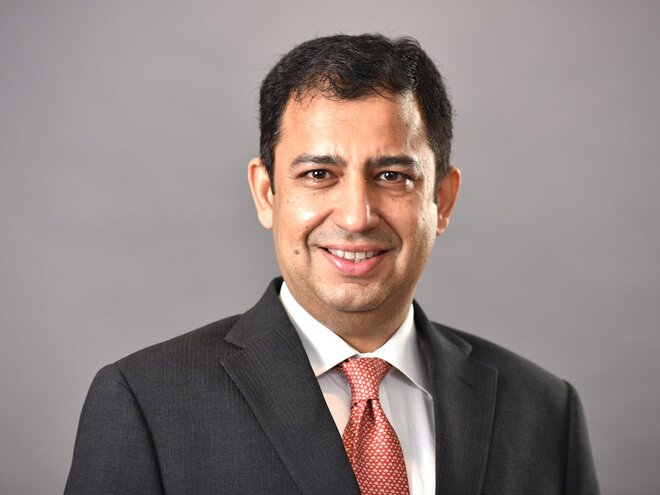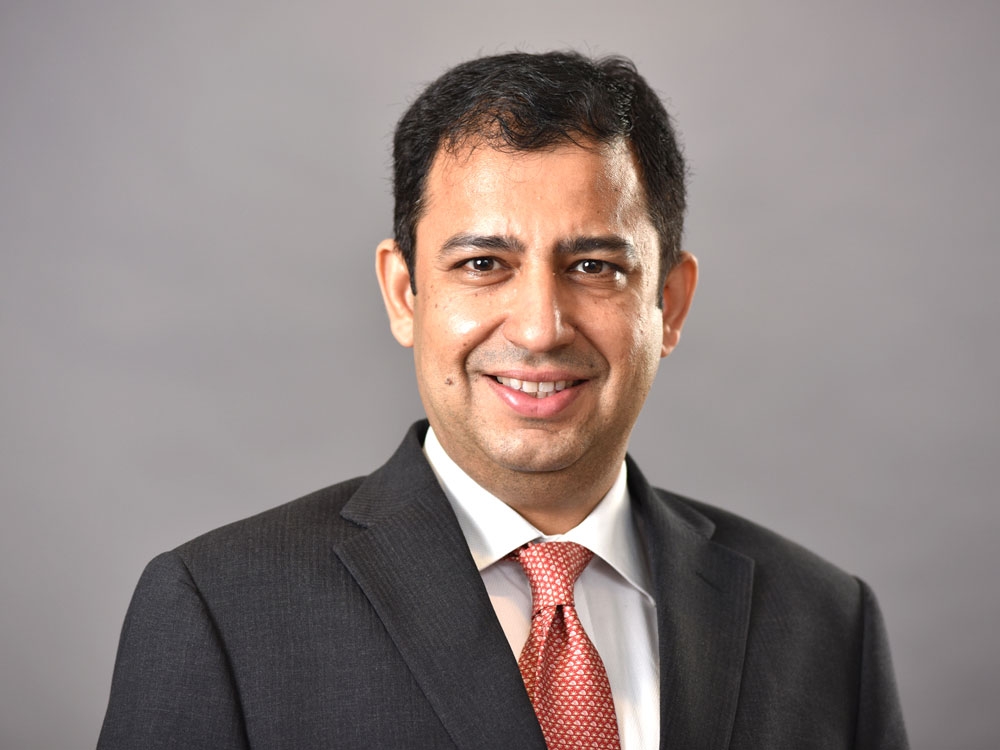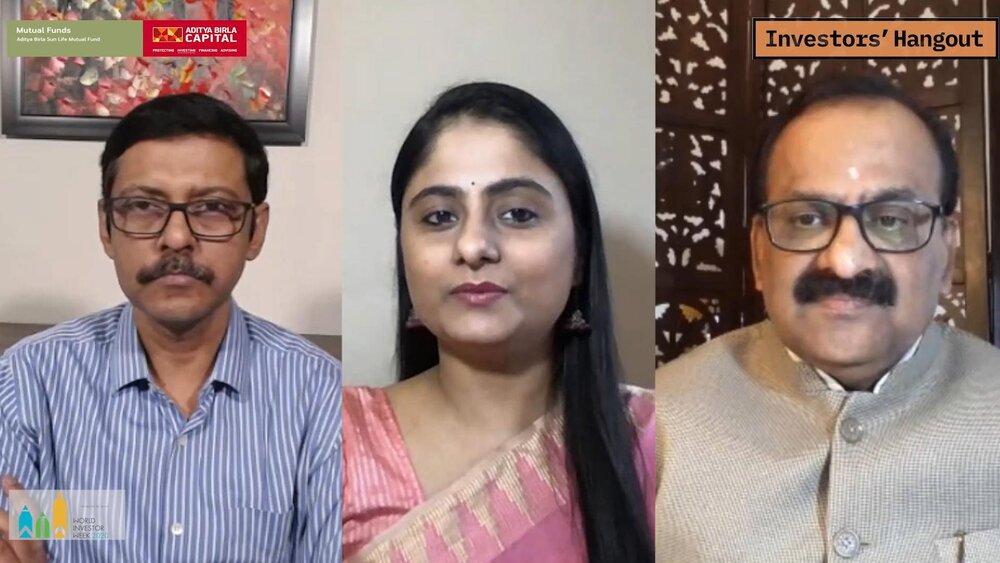
It has been over a year since the change in ownership to Nippon Life Insurance. Has the transition completed in all respects? How smooth has it been?
We have been operating under our new brand name, Nippon India Mutual Fund, for a little over a year now. Nippon Life took over as the majority shareholder in October 2019. From being a minority shareholder with about 26 per cent ownership in 2011, Nippon Life gradually increased ownership. Finally, when one of the earlier promoters wanted to monetise its stake, Nippon Life decided to undertake majority shareholding.
Nippon Life's overall view on India has been very positive. Along with being in the financial-services industry for so long as a life-insurance company, they want to slowly diversify into the asset management business going forward and tap the entire value chain for consumers. This is the first time for Nippon Life to be operating in a foreign country without a joint venture partner. But it looks at the management here, which is backed by Nippon Life, as its joint venture partner. And hence, the transition has been smooth owing to their trust in the management in India and shared value system.
Nippon, a 130-year-old Japanese company brings along an unrelenting experience of different market cycles and holds total assets amounting nearly twice the size of the Indian asset management industry. It is one of the largest institutional investors in Asia and one of the largest insurance companies in the world.
Our objective at Nippon India is to become a global asset manager based out of India. In India, whenever we talk about asset management, it is mostly about mutual funds, but our vision is to build a true-blue asset management company, where the presence will be across mutual funds, ETFs, off-shore funds, private equity, venture and alternative funds. That's how we want to expand going forward.
Has there been any impact on your distribution relationships? Traditionally, fully foreign-owned AMCs haven't done that well in India, although in your case the origin was very different.
That's a very valid question. A lot of foreign companies have not been able to make their mark in the Indian markets. My thinking is that it is the execution that makes all the difference. So, from our perspective, while shareholding has changed, it is still a home-grown Indian asset management company.
Most of the leadership personnel and the frontline team remains the same. It is one of the most stable management teams in the country. Let me take my own example. This is my 18th year with the company and it is the synergies of our trusted employees over the years that have augmented the company's growth. So, I think the continuity of the team has helped. The people remain the same and therefore the face of the company at every point of contact remains the same. But the new brand is even bigger.
Nippon Life is also aware of the history of many foreign asset management companies in India. Generally, foreign asset management companies have not been successful in India largely as they tried to use a plug & play model from their base country. That's why Nippon Life decided to provide a high degree of freedom and entrusted the leadership team deep-rooted locally to run the domestic operations, further customising to the Indian market conditions.
As far as institutional investors are concerned, they clearly understand a strong pedigree, as Nippon Life is one of the Fortune 500 companies. Being 130th on the Fortune 500 list is way above the majority of Indian corporate houses!
We have added more than 600 new institutional investors and family offices in the last 12 months, which shows that the brand has been received heartily. During the last three-four months, we have launched a few NFOs, which attracted as many as 80,000 investors, that too during a lockdown phase in the country.
How is Nippon Life contributing in functions like investment management and risk management?
One function where there is very strong guidance from Nippon Life is risk management. Let me give you an example in relation to fixed income. As a fund house, we have decided that we will not be investing in fixed-income securities rated below AA, in all but two schemes, where there is a SEBI-prescribed investment mandate or scheme-specific mandate. The retail investor may or may not be able to understand the associated risks, so we believe that it is better to set a framework that will safeguard the interest of our investors.
Similarly, on the equity side, we have defined framework for funds, what we call as 'Fund Casing'. Fund Managers will have all the freedom but will operate within the institutionalised framework - freedom within a framework. We do not believe in the concept of a star fund manager. The fund managers should be there to coach the team but should not be taking extreme calls. So, Nippon Life has been contributing significantly in building these frameworks.
Besides contributing in risk management, Nippon Life is also contributing in getting the global flows to India. We have three Indian funds in Japan, which are distributed in length and breadth across Japan. We have also started an Indo-Japanese tech fund, a first of its kind. The launch was announced in the G-20 summit. This would not have been possible without Nippon Life. A stronger risk-management framework, global business allocation and new business initiatives of spreading across all facets of asset management are where Nippon is contributing.
With increasing awareness, mutual funds are perhaps at the cusp of becoming mainstream investments. What are your focus areas over the coming decade? Where would you like to invest strategically?
I continue to be a great believer that from the perspective of mutual funds, the best years are yet to come for the industry as a whole. We clearly see the penetration getting deeper, but a lot is yet to materialise. Even today, the number of unique investors in India is only around two crores. Just to put things in perspective, if you look at the data of two-wheeler sales, they are about 2 crore every year and over 20 crore on the road!
Today, we are at a stage where the orientation is still towards AUM. I think it is time for the industry to move to the new benchmark and think about how to make every Indian household a mutual fund investor. One or two big corporate houses investing Rs 1,000 crore gives you a perspective that the industry has become big. But the real yardstick of success should be based on strategies to make every Indian household a mutual fund investor.
In terms of strategic initiatives, enterprising upon the digital medium is the game changer. Digital distribution will be a very important pillar. Nearly 50 per cent of the incremental purchase transactions done at Nippon India are digital and we want to deepen it further.
Also, over the next 10 years, I think we will see a big change in trend. The Indian markets have been obsessed with short-term performance. If a fund does well for two-three years, its AUM grows but then performance falls. The top-performing funds keep changing every two to three years. I feel there will be a time when a set of investors will start investing in ETFs. We are gearing up for this.
What are you doing to stay ahead in the ETF space? It is a highly competitive market segment where the global experience suggests that the winner takes all.
We are amongst the few players which have a strong pedigree and track record in both active and passive styles of fund management. We run ETFs as a separate business vertical. I clearly remember that when we took over the Goldman Sachs (erstwhile Benchmark Mutual Fund) operations, a lot of people questioned the decision. In India, you make money only through active management, they said. But our thought process is very simple, and we adhere to two principles. One is that what is good for the investor is good for us. We cannot stay away from the ETF segment because it doesn't get you high margins. If we do not enter it, someone else will. Secondly, we believe it is better to disrupt yourself rather than someone else disrupting you. Therefore, as part of our disruptive strategy, our ETF portfolio is getting bigger and stronger.
When it comes to ETFs, the key parameters to talk about are tracking error, liquidity and track record. Now the track record only comes with time and not much can be done about it. But the other two are linked to each other. Liquidity defines the tracking error. Because if liquidity is not there, the impact cost is high. So, liquidity is of utmost importance.
During April to September 2020, for Nifty 50 ETF, the everyday turnover in the stock exchange stood at Rs 36 crore across 17 ETFs. Out of this, Rs 26 crore was invested with Nippon India ETF, i.e., 70-75 per cent of the market share. The trading volume of the sixth-biggest player was Rs 24 lakh. Now imagine, if you are buying an ETF of a certain amount, it may take about a week's time and the impact cost will be around 2-3 per cent. This defeats the purpose of investing in a low-cost ETF.
Take another example of banking ETFs for the same period. Average daily traded volume of banking ETFs was Rs 37 crore. Out of this Rs 24 crore is only Nippon India ETF, and the fifth-largest player comes at Rs 45 lakh. Similarly, gold ETFs have a trading volume of Rs 53 crore, out of which Nippon contributes Rs 28 crore.
Last two-three years have been disappointing for some of your biggest equity funds in terms of performance. What have been the pain points and how much does that worry you?
I think it's challenging when you are not able to rise up to the expectations. Extraordinary past-performance records of some funds in our suite have made those expectations very high. But this is part and parcel of the investment-management business and I find this across the industry. Such phases come across the industry, especially, when we take thematic calls, i.e., a view on sectors which are cyclical.
The large-cap and multi-cap funds have not done well as expected over the last two years. But then there are other funds, like our small-cap fund, which have done well. The kind of polarisation that we have seen in the market has impacted performance. Also, there are businesses in the portfolio that continue to be good, but the valuations didn't turn out the way we were expecting. Things have become more difficult in the last two years. But hopefully you will see a bounce back very soon. The recent performance has already improved substantially. As I mentioned earlier, we have created a framework to control the style bias and marry the qualitative and quantitative factors to avoid the kind of variance we saw in the last two to three years.
On the debt side, the credit environment has been fairly challenging. Nippon India funds were also hit by downgrades. In hindsight, what could have been done to avoid them? How are they reshaping the thinking on the fixed-income side?
Post the IL&FS crisis, the entire industry is going through several challenges, but I believe, one has to continue learning from situations that do not pan out as assessed. Setting the right expectations for investors is key. A lot of investors never expected any risks in fixed income. I don't blame them. That's how the entire ecosystem has been paved over the years. That is the reason why we have decided to not invest below AA because there is a set of retail investors who might not understand the associated risk.
From an investment perspective, one of the important lessons is that credit appraisal should focus equally on cash flows as assessing the credit quality of the issuer. We are focusing only on those names where the cash-flow visibility is very high and structures are self-liquidating in nature, particularly in high-yield bonds. This way, we are not at the mercy of balance sheet vagaries and do not have to rely on refinancing. We will also be focused on avoiding concentration risk - something we have suffered from in the past. Much like I mentioned for equity schemes, we have put in place comprehensive framework for every debt fund, with finely defined quality and liquidity profiles.
In one of our past conversations in 2015, you foresaw the industry growing to well over Rs 20 lakh crore in AUM by 2020, and you had envisioned Nippon to grow faster than the industry. Five years down the line, your vision of the industry growth has played out but unfortunately Nippon hasn't kept pace. Do you believe that the AMC is now poised to cover some ground?
For me, as a professional, direction is more important than speed. Many times, if you overspeed, you can go wrong and if you don't move at all, even then you can go wrong. As I was mentioning earlier, in the next 10 years, I would like to see at least 50 per cent of the Indian households investing in mutual funds. We need to move from AUM targets towards penetration targets now. Second, we aim to keep investors at the center of our decisions and keep adding value, whether it is through active or passive products. From the perspective of the next five to 10 years, we are looking at various strategies to add value to investors and other stakeholders (being a listed company) rather than being in the asset-accumulation mode for immediate gains in the market share. For instance, look at what we are doing on the ETF side. It is possible that the active category may grow 10 times faster. But we are happy to continue strengthening our position in ETFs for future growth. Being a listed entity, our endeavour is to keep exploring opportunities to continuously add value to mutual fund unitholders and other stakeholders.
I would also like to highlight something very important about Nippon Life. Over the years, it has been actively contributing to the cause of the society and we would like to participate to continue this legacy. I'm happy to say that we contributed Rs 10 crore to the PM National Relief Fund during the COVID period. Moreover, we'd also like to play a very active role as a constructive minority shareholder and follow stewardship code in all our investee companies. So, there is a big change in the philosophy of the company.
We had some set of challenges - internal and external - but we have overcome them and we will soon be in a very strong position. I believe in the next five years, you will see the AMC in a new avatar. You will not only see the bounce back of mutual funds, but you will also see us as the true-blue asset manager across all facets of asset management - not only mutual funds but also ETFs, off-shore funds, private equity, venture and alternative funds.



